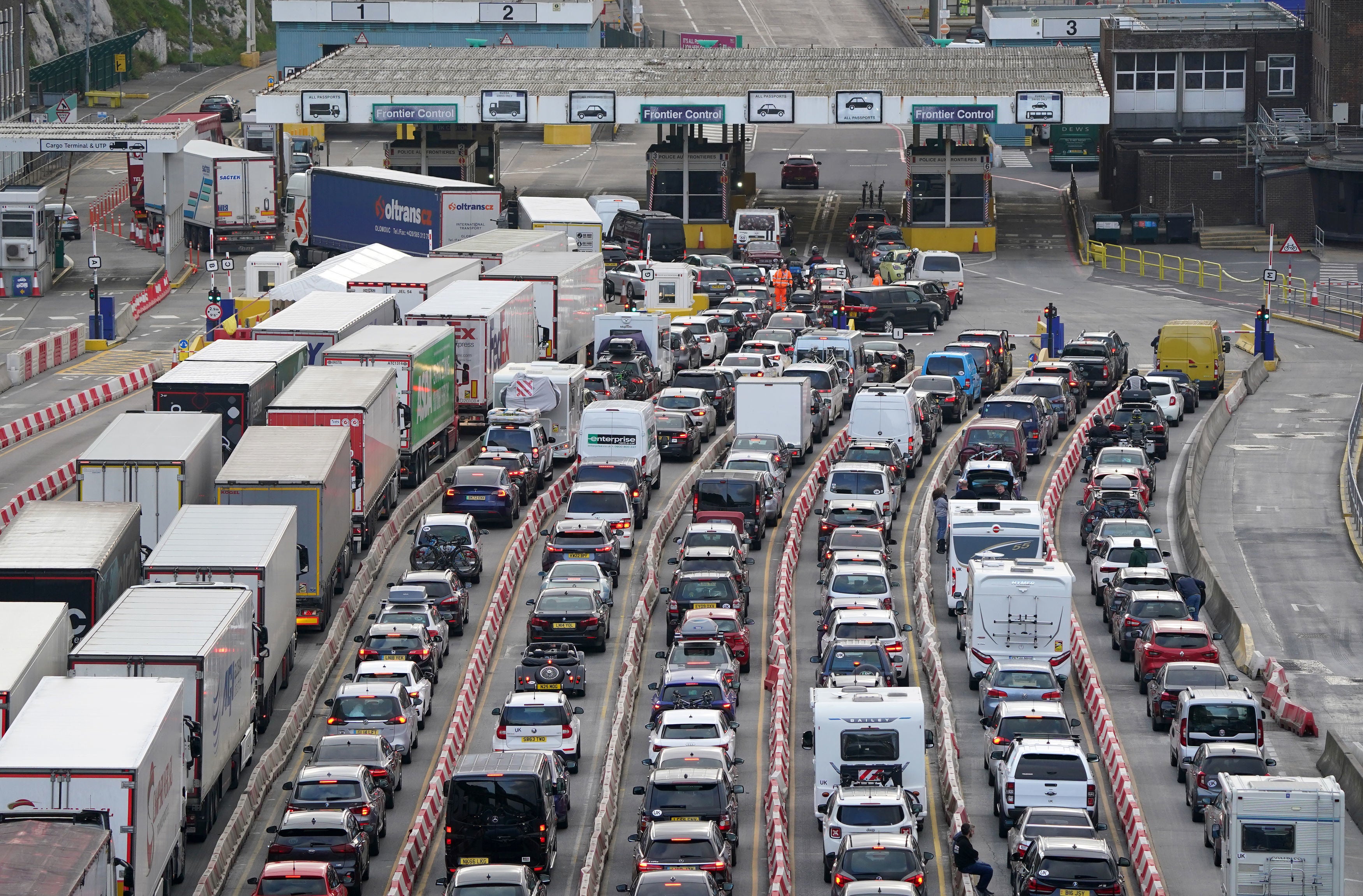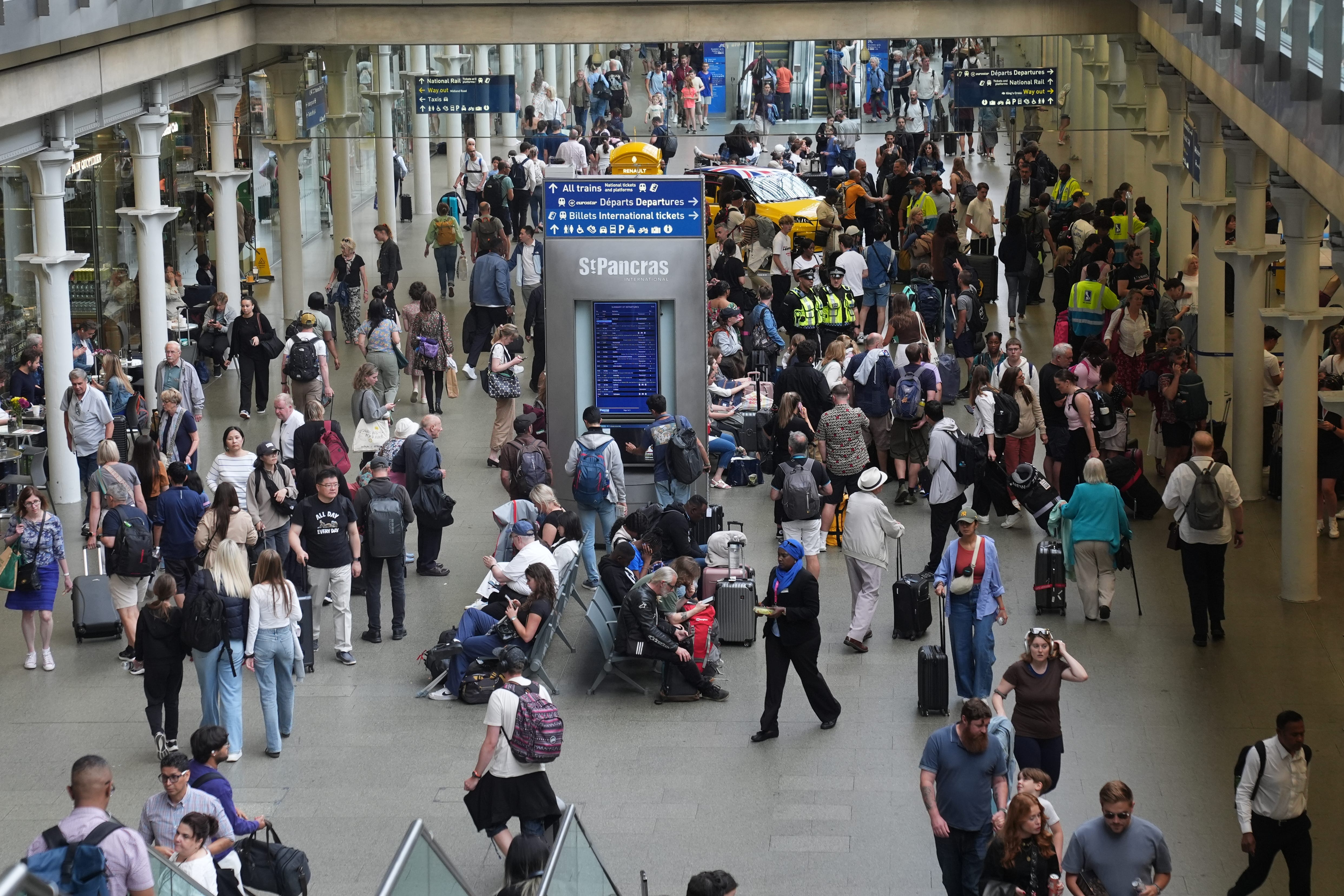Dover boss warns increased post-Brexit red tape will leave port unable to cope by Easter
Exclusive: Families heading for France in cars will provide fingerprints beneath a giant canopy, but concerns raised extra EU bureaucracy will lead to even larger queues

As millions of travellers face delays on roads and rail over the August bank holiday, the boss of the Port of Dover has issued a stark warning that post-Brexit checks could leave the major transport hub paralysed.
Chief executive Doug Bannister said tough incoming EU red tape could leave the port unable to cope with passenger demand beyond Easter next year, as he exclusively revealed what the future of ferry travel from Dover to France will look like.
Dover is the busiest port for passenger traffic in western Europe, with about 10 million passengers, 2 million cars and 70,000 coaches passing through each year. It is also the only UK port with “juxtaposed” frontier controls: French border officials clear travellers to board ferries for Calais and Dunkirk in northern France while they are still on British soil.
On peak summer days long queues have built up at Dover because of the requirement since Brexit for French Police aux Frontières to check and stamp each UK passport.
The UK is now just weeks away from much more stringent frontier formalities. From November, the EU entry-exit system (EES) will mean every British traveller must have their fingerprints and a facial biometric taken.

For most outbound travellers the new procedures will take place at the arrival airport or port in Spain, France or other Schengen area countries.
But motorists and car passengers will be processed before departure for France. The Port of Dover was designed on the basis of free-flowing traffic, with planners never envisaging a time when travellers would have to submit fingerprints.
Millions of pounds are being spent on new infrastructure to try to cope with the bureaucratic demands resulting from the EU withdrawal agreement.
From 10 November, British holidaymakers in cars will find themselves sat under a giant canopy, where passengers will provide their fingerprints and facial biometrics on tablet computers.
“If you’re non-EU then you’ll be directed under this canopy that we are putting up in the Eastern Docks,” Mr Bannister said. “When you arrive under that canopy, you’ll be met by hopefully very smiling agents with their tablets.
“They’ll capture the information that they need to register you on the system. That will comprise some information about your passport, some ‘Schengen questions’ on where you’re going and when you’re coming back. Then finally, it will take two forms of biometrics: fingerprints and facial recognition.
“Once you’re registered, then you’ll proceed from under the canopy to the border controls.”

Coach passengers, meanwhile will be processed at the Western Docks on the other side of Dover. Once cleared by French officials, each coach will be sealed and then drive through the Kent town with those on board effectively in French territory. The same technique was used during Cold War years for transit between West Germany and West Berlin.
In an exclusive interview with The Independent, Mr Bannister said that while the port should be able to handle the initial influx of passengers when the rules change in late autumn it will not be able to cope when the next summer holidays get under way.
The Dover CEO said the new infrastructure will be sufficient for the expected flows “from when EES is introduced in November through to about Easter”. But he said “it will be inadequate for handling the full volume of traffic that we’re anticipating for next summer”. In July this year, more than 37,000 passengers departed on the busiest days – an average of 26 travellers per minute.
Mr Bannister said: “We have a programme underway to have the car-registration process shipped from the Eastern Docks to the Western Docks – sited on land that we are currently reclaiming from the sea.
“But that is not yet approved. So we’re still working with our government and the French and EU authorities to get that approved.”
Mr Bannister added that a “live trial” of the entry-exit system is essential before 10 November – the date on which all frontiers across Europe are required to switch immediately to EES.
“Collectively across all the gateways through into Europe, we’re carrying some technology risk,” he said. “And that is because it’s a brand-new system. We haven’t trialled and tested it in a live environment yet.
“We’ve got also a complication here that our car solution for November is going to be a tablet-based solution with agents.
“So, we also need to make certain that those work effectively. We’re asking, continuously, to get a live trial done here in Dover so that we can understand how that technology works.”

One senior travel industry figure said the new red tape “will add significant complexities for many travellers”. Julia Lo Bue-Said, chief executive of the Advantage Travel Partnership, said: “To avoid significant delays at airports and ports, it remains critically important that the government initiates a clear and robust communication strategy to ensure no one is left with any degree of uncertainty.”
French border officials also process travellers on British soil at the Eurostar hub of London St Pancras International and at the Eurotunnel terminal at Folkestone.
Eurostar, which runs trains from London to Paris and Brussels, has invested around £9m in preparing for the entry-exit system. A spokesperson said: “Our aim is to minimise the impact on our customers to ensure the smoothest possible travel experience and the detailed work required to achieve this has been under way for some time.
“We plan to install around 65 pre-check-in kiosks in our terminals at St Pancras in London and Gare du Nord in Paris. These kiosks are currently in the process of being installed.
“We are also significantly reinforcing border control capacity with additional manual booths and electronic gates at both stations.”
A spokesperson for Eurotunnel, which takes vehicles on shuttles through the Channel Tunnel from Folkestone to Calais, said: “We have invested more than £70m since the beginning of the process, designing and building new dedicated EES zones, with a total of 224 kiosks installed across our terminals in France and the UK.”
The entry-exit system is the first significant step in the EU’s much-delayed smart borders project. Six months after EES is successfully implemented, the long-proposed Electronic Travel Information and Authorisation System (Etias) will begin to be rolled out.
A government spokesperson said: “The government’s priority is making sure we are fully prepared for the EU’s introduction of the Exit Entry System.
“We are expanding the French border control zone at Dover and will continue to work closely with local authorities and agencies, the European Commission and the travel industry to ensure they’re preparing effectively.”
Simon Calder’s podcast with Port of Dover CEO Doug Bannister






Join our commenting forum
Join thought-provoking conversations, follow other Independent readers and see their replies
Comments